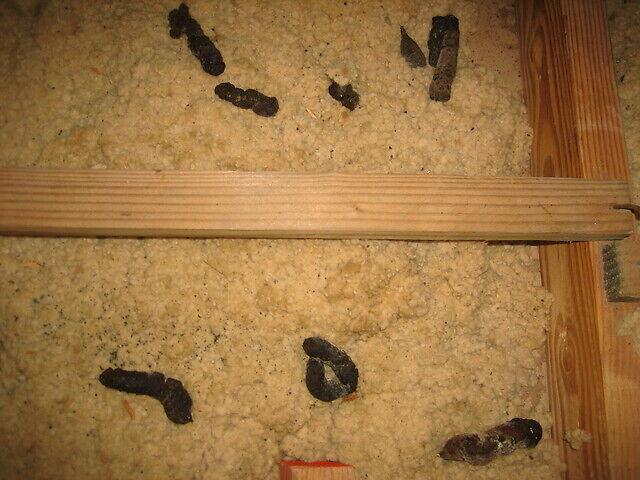Opossum Feces
First off, it is never safe to touch or inhale opossum feces, due to the significant number of unfamiliar bacteria that can cause diseases to yourself or your pets if you come in contact. For this reason, it is best to learn how to identify opossum feces, understand the safety concerns, and remove the feces in a safe manner to ensure the health of your household and other nearby animals.
How to Identify Opossum Feces

To ensure you are removing the feces properly, it is best to understand the feces you are dealing with in order to take the correct steps moving forward. However, in most cases, when dealing with wild animal feces, there are many concerns around bacteria, viruses, and parasites. Therefore, you should always avoid touching or breathing in animal droppings.
So how do you tell if the feces you have found belong to an opossum? It is important to note that while droppings will change in shape, based on diet, there are a few general traits that are notably unique in opossum feces. Opossum stool is:
- pointy or tapered at the tips
- smooth in the middle
- 1 to 3 inches long
- approximately ¾ of an inch in diameter
- tends to be curly
- has a similar size to dog waste
If after examining from a distance, you are still confused about where the feces are from, you can look for nearby animal tracks to determine whether or not the stool belongs to an opossum.
Health Concerns
Under no circumstance is it recommended to breathe in or touch opossum feces, due to health concerns. Opossums carry pathogens that can cause disease and are known to be infested with parasites. These diseases can spread to humans or animals through contact. Particularly, leptospirosis, EPM, parasitic worms, salmonella, and even Hepatitis A can be contracted from opossum feces, as well as fungal infections from breathing in the feces.
To avoid the lingering of these diseases and health concerns, it is important to clean up the feces as soon as you can. With all the concerns around opossum waste, avoid close contact with the stool and ensure that you take necessary steps to keep you, your household, and any animals on your property healthy.
Handle Safely
One way to ensure wild animal waste is properly and safely removed from your property is to contact a professional. This will eliminate putting anyone at risk and can ensure the situation is under control.
However, professionals may be far from you or take too long to get to your property. Yet under these circumstances, it is still necessary to remove the waste quickly. In this situation, here’s what you should do:
- Identify all the feces in the area
- Wear a mask and gloves
- Drop the stool into double bags
- Use a cleaning kit to disinfect the entire contaminated area afterward
Bleach or strong disinfectants are highly encouraged and it is important to clean every aspect of the area, from corners to larger surfaces. Similarly, disinfect any insulation within the vicinity to avoid any particles still existent from spreading in the air. Professionals can also be hired to properly disinfect, as well as provide advise for how to opossum-proof your property to avoid similar situations in the future.